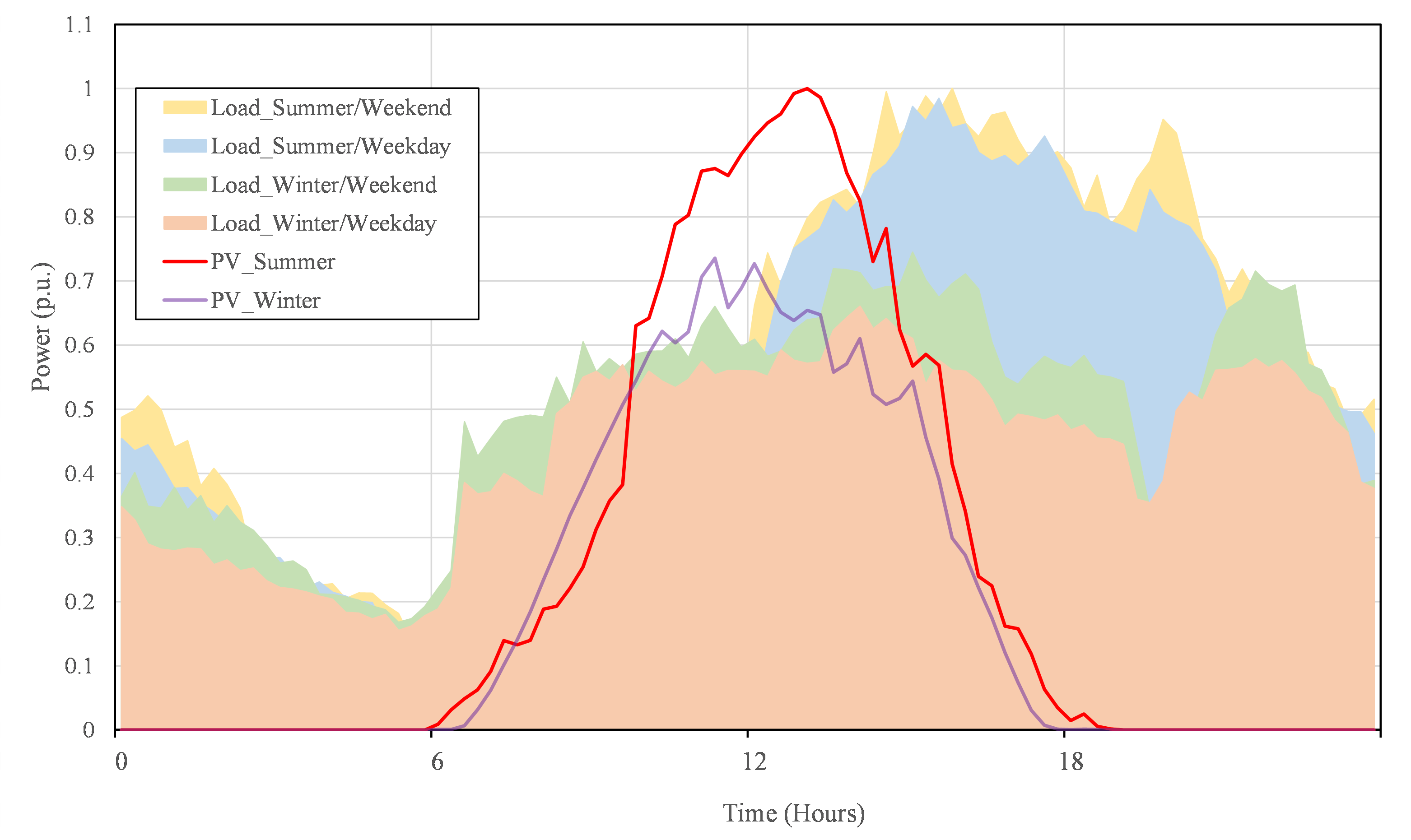Simulation of Low Voltage Distribution Network Threshold for PV Rooftop Penetration
Keywords:
Photovoltaic (PV) rooftop, voltage profile, low voltage distribution networkAbstract
The rapid increases of photovoltaic (PV) rooftop on residential houses in low voltage (LV) distribution network cause several impacts in Provincial Electricity Authority (PEA)’s distribution network. Voltage profile is one of the most important technical factors that the utility has to maintain within the proper limit. This research investigates the impacts of PV rooftop on low voltage distribution network complying with PEA’s regulation on power network system interconnection code B.E.2016. The scenarios comprising seasonal and working periods are considered. The studied criteria are divided into 3 cases; 1) the connection of PV rooftop at 15% of distribution transformer capacity 2) the connection of PV rooftop at 100% of transformer capacity 3) the increase of PV rooftop causing voltage profile up to 1.10 p.u. The simulation is studied in the DIgSILENT power factory with DPL script and Python programming language due to the diverse criteria. The results show that the limit of regulation is able to control the voltage profile within the operation range. Moreover, the low voltage distribution network threshold is about 293.75% of the distribution transformer capacity that PV rooftop causes the voltage level reaching to the limit. However, the result should be considered before reference, because this research focuses on the voltage profile, not others significant issues.
References
Department of Alternative Energy Development and Efficiency (DEDE). (2018). Thailand Alternative Energy Development Plan 2018-2037 (AEDP 2018). Retrieved August 15, 2021, from https://www.dede.go.th/download/Plan_62
Energy Regulatory Commission. (2021). The household solar scheme offers a feed-in tariff for residents. Retrieved December 10, 2021, from http://www.erc.or.th/ERCWeb2/Front/News/NewsDetail.aspx?Type=1&CatId=1&rid=85397&muid=36&prid=21
Energy Regulatory Commission. (2021). The buying solar scheme for school, hospital and agricultural water pumping. Retrieved December 14, 2021, from https://www.erc.or.th/ERCWeb2/Front/News/NewsDetail.aspx?rid=87591&CatId=1&&muid=36
Provincial Electricity Authority. (2019). PEA company profile. Retrieved September 12, 2021, from https://www.pea.co.th/Portals/0/Document/AnnualReport/PEA_COMPANY_PROFILE.pdf
Provincial Electricity Authority. (2018). Power Producer Information Management System (PPIM). Retrieved August 20, 2021, from https://ppim.pea.co.th/project/solar/list
P.E.A.(PEA). (2016). Provincial Electricity Authority’s Regulation on the Power Network System Interconnection Code B.E.2016. Provincial Electricity Authority (PEA), Bangkok.

Downloads
Published
How to Cite
Issue
Section
License
Copyright (c) 2022 School of Renewable Energy and Smart Grid Technology (SGtech)

This work is licensed under a Creative Commons Attribution-NonCommercial-NoDerivatives 4.0 International License.
All copyrights of the above manuscript, including rights to publish in any media, are transferred to the SGtech.
The authors retain the following rights;
1. All proprietary rights other than copyright.
2. Re-use of all or part of the above manuscript in their work.
3. Reproduction of the above manuscript for author’s personal use or for company/institution use provided that
(a) prior permission of SGtech is obtained,
(b) the source and SGtech copyright notice are indicated, and
(c) the copies are not offered for sale.








